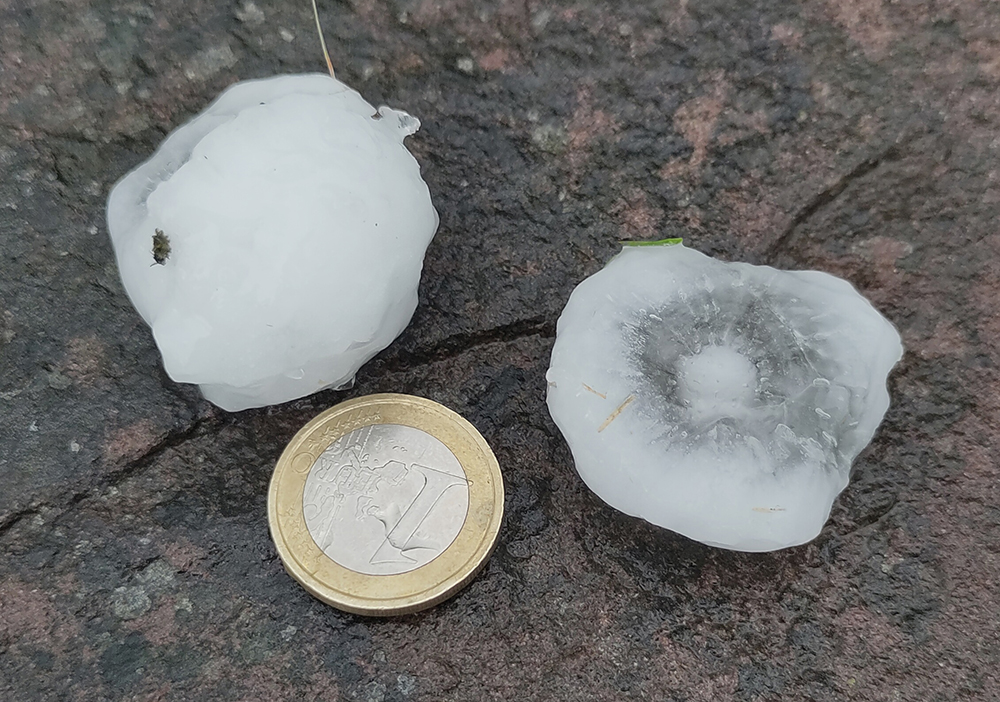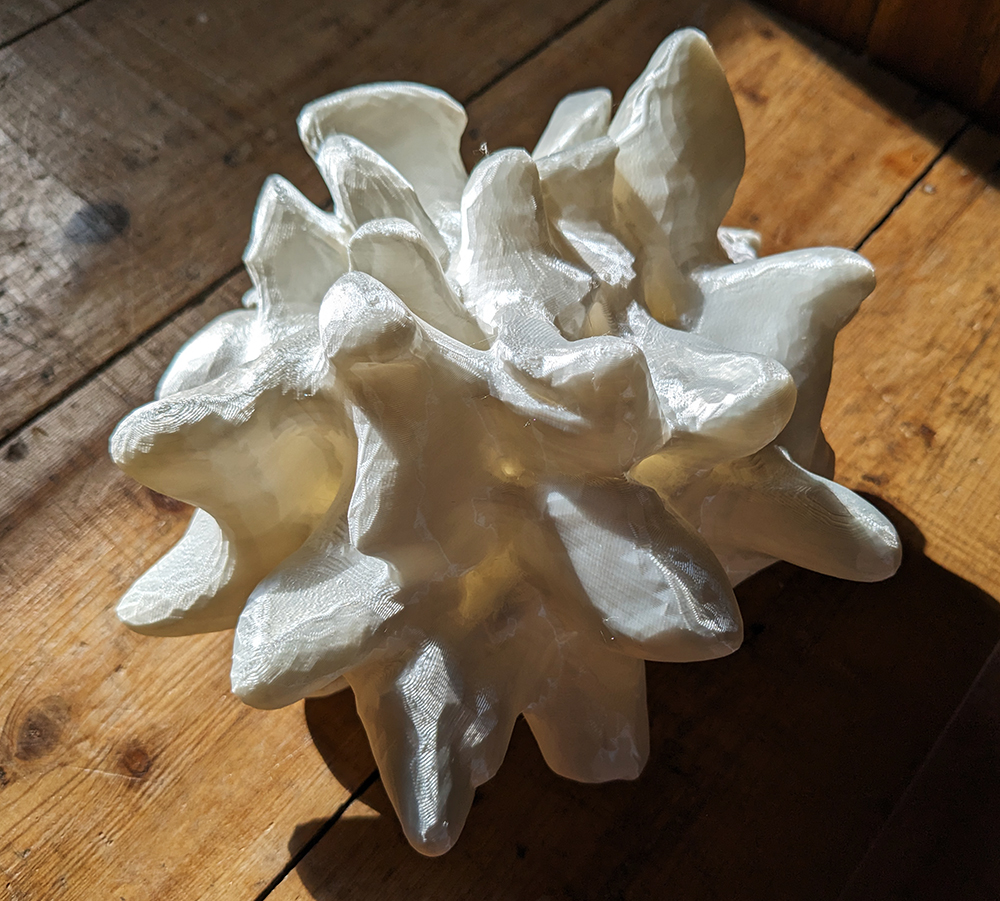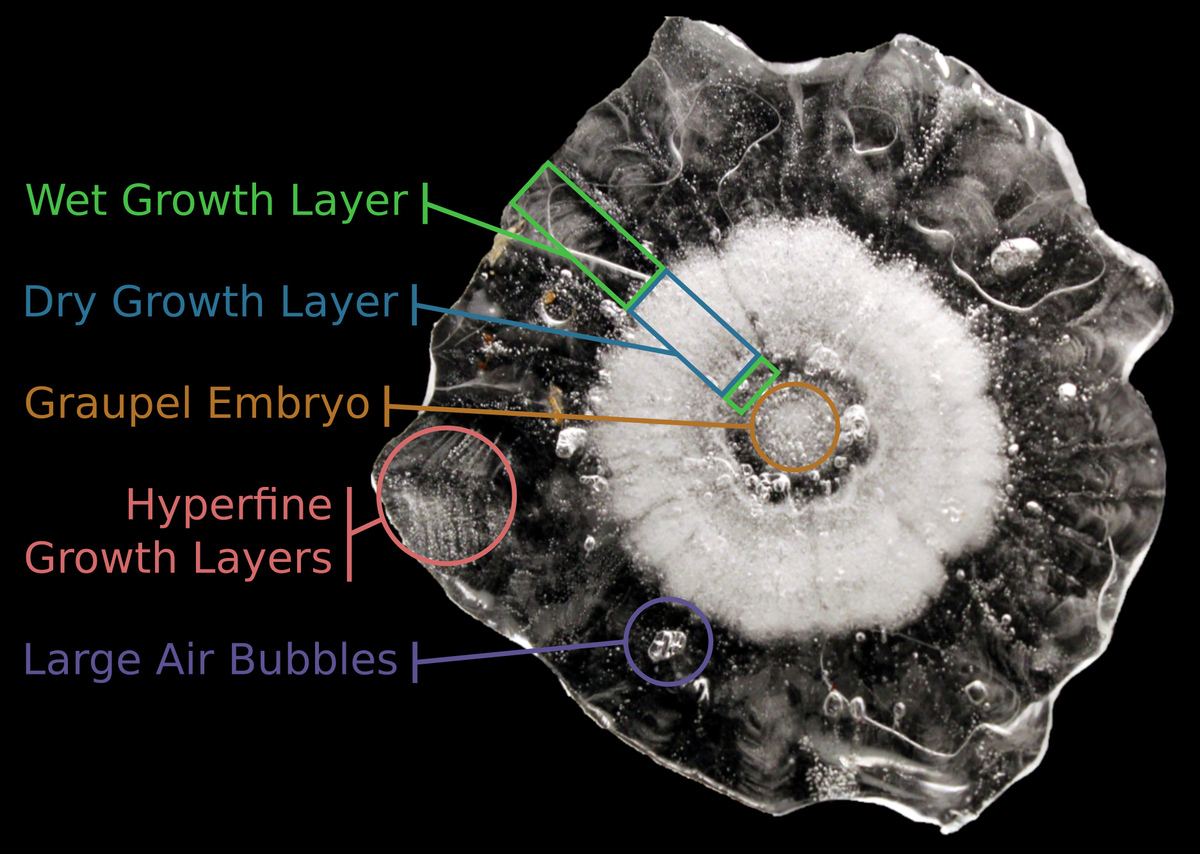Searching hailstones...
As part of the LIFT project at the Institute of Meteorology and Climate Research at the Karlsruhe Institute of Technology (KIT), the working group "Atmospheric Risks" is currently collecting hailstones. LIFT stands for "Understanding Large Hail Formation & Trajectories" and is a project of KIT and the University of Bonn funded by the German Research Foundation (DFG). The overall objective of the project is to improve the physical understanding of hail formation and hailstone distribution in order to improve hail forecasting on near-real-time and to improve damage estimates caused by hailstorms (see also LINK).
Part of the project is dedicated to the measurement of hailstones. The shape of a hailstone is determined by a combination of dynamic and microphysical processes. The shape also affects how it melts, how it falls and how it is detected by precipitation radar. All of these factors have implications for the modelling and forecasting of hail events. Conventional hailstone measurements are usually made using calipers along the major, minor and third axes of a hailstone, but these measurements cannot capture complex geometries (see Fig 2). As hailstones become larger, they typically become less spherical and exhibit more complex surfaces, and thus measuring this complexity becomes more important. To correctly capture the shape of hailstones, a 3D scan using photogrammetric techniques (cf. LINK). After scanning, simulations can be performed and compared with observational data (e.g. radar data, trajectory measurements). It is also possible to reproduce a scanned hailstone with a 3D printer (cf. Fig. 2) in order to use it for further laboratory activities.
In addition, a cross-sectional analysis of the hailstones will be performed by "slicing" them. Cross-sections provide a unique insight into the internal composition of hailstones (Fig. 3) and allow an understanding of the structural diversity within the same hailstorm or between different hail events. The milky/opaque and transparent ice forms in response to the different microphysical conditions during the growth phase of a hailstone. Opaque ice contains a high concentration of tiny air bubbles that become trapped when the attached water droplets freeze almost instantaneously (dry growth). Transparent ice is formed when the collected water droplets remain liquid on the surface for a long time and can penetrate the small pores (wet growth). It is also possible to determine the embryo particle from which the hailstone has formed. Depending on the temperature range in the formation phase, the embryo is opaque, indicating a graupel embryo (Fig. 3), or transparent if it is a large frozen water droplet. Measurements of growth ring thickness and shape not only provide a better understanding of growth conditions, but also serve to validate hail growth models.
This year and next year, we will collect hailstones ourselves as part of our Messkampagneneinsätze in Baden-Württemberg. However, we also ask the public for active help here: after a hailstorm, collect hailstones from around 4 cm (golf ball size) outside your house and store them, preferably individually packed, in the freezer. Reports (including a photo) can be sent by e-mail to hagel∂imktro.kit.edu; we will then pick up the hailstones from your home. In this way, everyone can help to improve hail forecasting!
Links/references:
Soderholm, J. S. and Kumjian, M. R.: Automating the analysis of hailstone layers, Atmos. Meas. Tech., 16, 695–706, https://doi.org/10.5194/amt-16-695-2023, 2023.
Soderholm, J. S.: Hail Observations. Link: https://sites.google.com/view/joshuasoderholm/current-projects/hail-observations.
Live on Landesschau Baden-Württemberg: Michael Kunz is hunting thunderstorms (from 30.6.2023, 20:30 Uhr byJelena Denk; in German)



